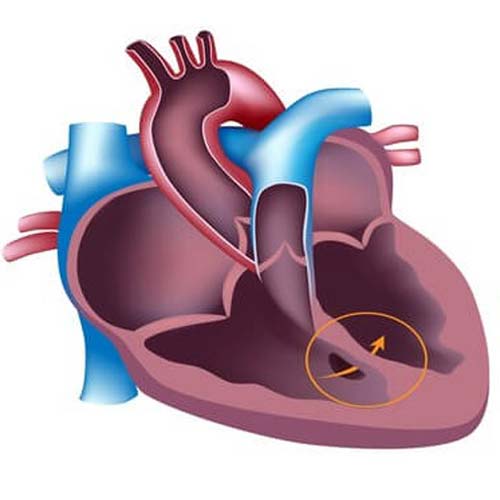Ventricular septal defect treatment

A ventricular septal defect is a hole between the lower heart chambers or ventricles where the defect appears in the muscle that divides the two sides of the heart. There are different types of deformity. We note the closure of some small deformities without therapeutic intervention, and without causing any long-term effects. But others are defects that do not close on their own and are treated by surgery.
What are the symptoms of this deformity?
In general, it does not cause any symptoms in children, especially if the hole in the heart is small
If symptoms do appear , they include:
- difficulty breathing
- Rapid breathing
- Pale skin color
- Frequent respiratory infections
- Blue skin color, especially around the lips and nails.
We also note the difficulty of gaining weight in infected children, in addition to profuse sweating during breastfeeding
Where these symptoms may be very serious. So you should see a doctor immediately when you notice any of these symptoms on a child.
What are the causes of ventricular septal defect?

Congenital heart defect is the most common cause, and it is a defect formed from birth. An example of this is that some people are born with holes that already exist in their hearts, as they do not cause any symptoms at first and take years to diagnose.
A rare cause is blunt trauma to the chest, for example a serious car accident with direct, forceful or repeated trauma to the chest may cause a VSD.
Factors that increase the risk of a ventricular septal defect:
- The person is of Asian descent
- or has a genetic condition of congenital heart disease,
- and other genetic disorders such as Down syndrome.
How is it diagnosed?
It begins with the doctor listening to the child’s heart and taking a complete medical history, then conducting several types of tests, including:
- Esophageal echocardiography (TEE), which is an image taken by numbing the throat and then moving a thin tube containing an ultrasound machine down the throat and into the esophagus near the heart.
- Echocardiogram with saline bubble test, which is an ultrasound scan of the heart while saline bubbles are injected into the bloodstream.
- MRI uses radio and magnetic waves to create pictures of the heart.
How is a ventricular septal defect treated?
surveillance
An observational approach is followed. If the deformity is small and does not cause any symptoms, the defect can resolve on its own, during which time the doctor will carefully monitor the child’s condition to make sure that his condition is improving.
surgery
In more serious cases, surgery is required to repair the damage. Most surgeries to correct a VSD are open-heart surgery where they start with anesthesia and place the patient on a heart-lung machine. Then the surgeon makes an incision in the chest and closes the deformity with either stitches or a patch.
Or if the deformity is significant, the person or child may need medication to control symptoms before surgery. It may include digoxin, a drug made from the foxglove plant and Digitalis lanata, and possibly diuretics as well.
Ventricular septal defect treatment in Türkiye:
Türkiye is one of the leading countries in the field of cardiac surgery, as it was one of the few countries in the world that performs this type of complex surgery
REHABTÜRK HEALTHCARE PROVIDER NETWORK, we understand the importance of choosing the best specialists in cardiovascular surgery
So your health is in good hands!
Where the doctors and cardiovascular surgeons in REHABTÜRK have long experience and multidisciplinary teams to provide the best treatment for patients.
